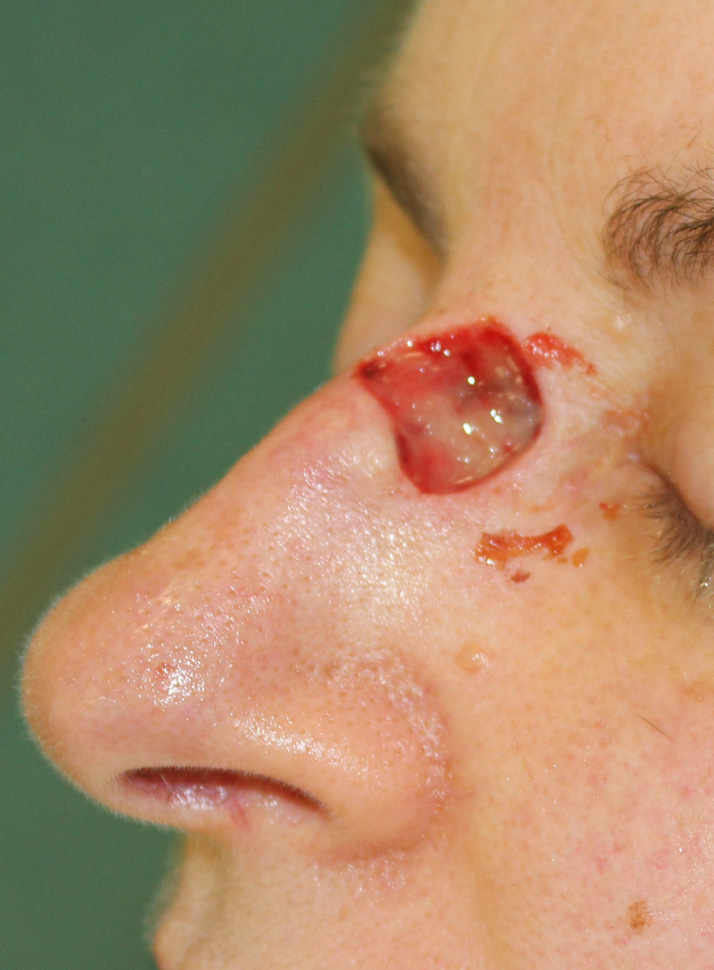Nose Reconstruction
Nose reconstruction surgery aims to repair nasal deformities by reshaping or restructuring the nose.
What Is Nose Reconstruction Surgery?
A patient may require nasal reconstruction if their nose has experienced trauma due to injury or cancer. In some cases, however, nose deformities can be apparent from birth. Such damage to the nose can cause a patient to feel self-conscious, and difficulty breathing may also be affecting their quality of life.
Case Studies
Before Surgery
We understand that having a cosmetic procedure is a huge decision. That’s why we ask every patient to come to the clinic for a consultation to establish what their surgery expectations are and how we can help. Should you choose to go ahead, you must do the following:
- Patients should stop taking anti-inflammatory drugs
- Stop smoking at least 6 weeks before
- Avoid taking aspirin
Arrange for a friend or relative to collect you from the clinic after your surgery. You should also expect to take at least a couple of weeks off from work post-surgery, depending on the nature of your job.
What Happens During The Procedure?
This procedure usually takes between 1 to 2 hours and will require general anaesthetic. Due to the nature of surgery being to target certain defects of the nose, there are various techniques used. Depending on what is required, the surgeon may use one or more methods to achieve optimal results.
To fix or reshape the nose, the surgeon will make an incision into the skin to rearrange the bone or cartilage. The nose may need to be broken and put back together in some instances. The skin is then redraped and stitched back together with dissolvable stitches. There will be a splint placed on the inside or outside of the nose to help it retain its shape during the healing process.
For nasal reconstruction where skin grafting is required, the process is slightly different. Skin will need to be taken either from the nose or from another area on your body. If the area of concern is small enough, skin on the nose can simply be stretched to cover the wound. On the other hand, a staged procedure may need to be conducted. Usually this type of surgery will use an expander placed under the forehead which stretches the skin. This creates healthy skin that can then be taken for the nose reconstruction surgery.
Nasal Reconstruction Aftercare
Your nose will be covered in a bandage, along with the splint holding it in place. At first, the patient may experience some pain and discomfort for which they may require analgesia. It’s vital that you follow the advice given by your surgeon after surgery, including:
- Avoid strenuous activity including exercise
- Keep your head upright at all times for the 5-7 days
- Keep the nose as dry as possible
- Avoid driving after surgery
- Don’t blow your nose
Your progress will be checked a week after surgery in the dressings clinic to ensure you’re healing well.
Potential Risks And Complications
The majority of patients are delighted with the treatment, but there are always some potential risks and complications with any surgery. Some common side-effects include a blocked nose, swelling, sensitivity and numbness. More serious risks such as damage to the cartilage wall or permanent breathing problems will be discussed in further detail during your first consultation.
FAQs
Who Is It Suitable For?
Nose reconstruction is suitable for those who have has nasal deformities since birth, or those who have been affected by a trauma or injury.
Can Nasal Reconstruction Help Breathing?
Yes, nose reconstruction surgery can improve breathing for many patients.
How Much Does Nasal Reconstruction Surgery Cost?
This greatly depends on the severity of the problem and what exactly is required. All costs will be disclosed after your first consultation.
What Are The Results?
It may take several months for the final results to show. Once the swelling and bruising has calmed down the patient will see an improvement in appearance with their deformities corrected.
What Are Nose Reconstruction Scars?
The surgeon will always try to keep scarring as minimal as possible, however, due to the invasive nature of the surgery some small scarring is to be expected. Though they will appear red or purple at first, they will fade over time.








